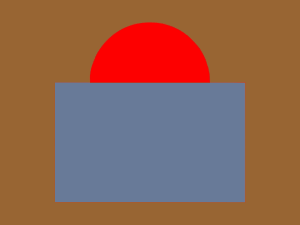2nd Battalion, Canadian Mounted Rifles
The 2nd Canadian Mounted Rifles Battalion, (known colloquially as the 2nd Battalion, CMR or simply 2 CMR) was authorized on 7 November 1914 as the 2nd Regiment, Canadian Mounted Rifles, CEF. The battalion recruited in Victoria and Vernon, British Columbia and was mobilized in Victoria.[1] An earlier incarnation was raised for Boer War.

The Boer War
In November 1901, the British government requested from the Canadian government a four-squadron regiment of mounted rifles for the Boer War.[2] Canadian Department of Militia and Defence equipped and trained the unit, while the British paid its costs. The majority of the officers and at least a quarter of the men had previously served in South Africa, including its commander Lieutenant-Colonel T.D.B. Evans. On 31 March the unit fought as part of an outnumbered British force at the Battle of Harts River, or Boschbult. The unit participated in a number of other drives to round up Boers before the war ended on 31 May 1902.[2]
World War I
The battalion embarked for Great Britain on 12 June 1915. It disembarked in France on 22 September 1915 as part of the 1st Canadian Mounted Rifles Brigade. On 1 January 1916 it was converted to infantry, amalgamated with 'B Squadron' and the headquarters staff of the 3rd Regiment, Canadian Mounted Rifles, CEF and re-designated the 2nd Canadian Mounted Rifles Battalion, CEF. It fought as part of the 8th Canadian Infantry Brigade, 3rd Canadian Division in France and Flanders until the end of the war.
After World War I
The battalion was disbanded on 6 November 1920.[3]
Commanding Officers
- Lieutenant-Colonel J.C. Bott, 12 June 1915 – 27 November 1916
- Lieutenant-Colonel G.C. Johnston, 27 November 1916-Demobilization[1]
Battle honours and awards
- Mount Sorrel
- Somme, 1916
- Flers-Courcelette
- Ancre Heights
- Arras, 1917, '18
- Vimy, 1917
- Hill 70
- Ypres, 1917
- Passchendaele
- Amiens
- Scarpe, 1918
- Hindenburg Line
- Canal du Nord
- Cambrai, 1918
- Pursuit to Mons
- France and Flanders, 1915-18[1]
Capt. John MacGregor was awarded the Victoria Cross for his actions during the Battle of the Canal du Nord from 29 September to 3 October 1918.[1]
The 2nd Canadian Mounted Rifles Battalion is perpetuated by The British Columbia Dragoons.[3]
References
- Meek, John F. Over the Top! The Canadian Infantry in the First World War. Orangeville, Ont.: The Author, 1971. ISBN 0906158109
- Canada & The South African War, 1899-1902, Canadian War Museum
- Canadian Forces Publication A-DH-267-003 Insignia and Lineages of the Canadian Forces. Volume 3: Combat Arms Regiments.
Sources
Canadian Expeditionary Force 1914-1919 by Col. G.W.L. Nicholson, CD, Queen's Printer, Ottawa, Ontario, 1962